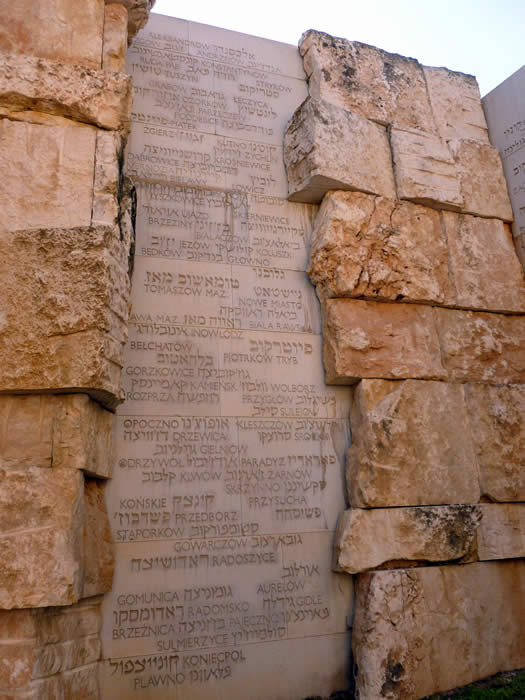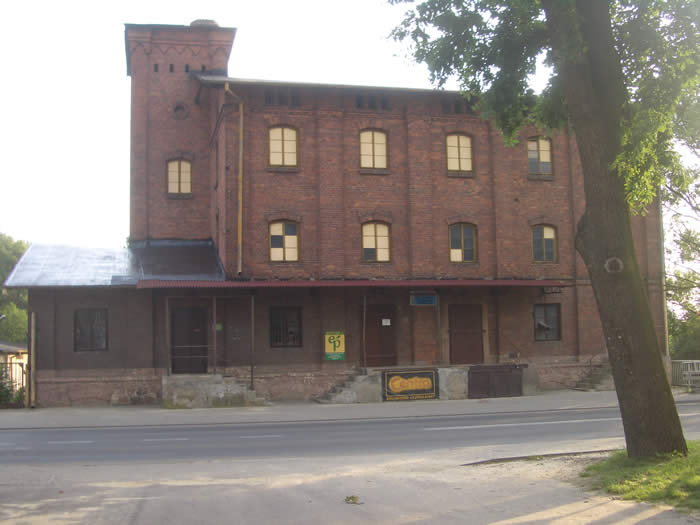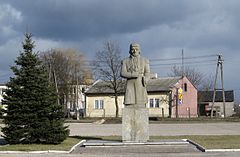|
Gmina
Ujjazd currently covers an area of 96.96 square kilometres
(37.4 sq mi),
and as of 2006 its
total populationwass 7,747.
The official website of Gmina Ujazd can be found
here.
|
|
Gmina
Ujazd is a rural administrative district in Tomaszów Mazowiecki
powiat, Lódz Voivodeship in central Poland. with its seat in the
village of Ujazd.

Town Crest
|
|
Gmina
Ujazd contains the villages and settlements of Aleksandrów,
Bielina, Bronislawów, Buków, Ciosny, Debniak, Helenów, Józefin,
Kolonia Debniak, Laczkowice, Lipianki, Lominy, Maksymów, Marszew,
Mlynek, Niewiadów, Ojrzanów, Olszowa, Osiedle Niewiadów,
Przesiadlów, Sangrodz, Skrzynki, Stasiolas, Szymanów, Teklów,
Tobiasze, Ujazd, Wólka Krzykowska, Wygoda, Wykno and Zaosie. [July
2009] |
|
|
Ujazd's Jewish History
From “Ujazd” - Encyclopedia of Jewish
Communities in Poland, Volume I (Poland)
Translation
of “Ujazd” chapter
from Pinkas
Hakehillot Polin
Population
|
Year
|
General
Population
|
Jewish
Population
|
|
1764
– 1765
|
(?)
|
79
|
|
1793
– 1794
|
376
|
125
|
|
1808
|
509
|
172
|
|
1827
|
812
|
347
|
|
1857
|
1,055
|
543
|
|
1897
|
1,595
|
816
|
|
1921
|
1,987
|
792
|
|
1.9.1939
|
(?)
|
About
800
|
Ujazd
was given the status of a city in 1428. It is
possible to approximate that the Jewish settlement was
established there in the second half of the 17th
century, or at the latest in the early 18th century,
when a new suburb was created that included a market
square which was called the Jewish Market. In
1764, fourteen Jewish families lived in Ujazd; five of
the families lived in small houses which they owned.
There were innkeepers, merchants, peddlers, and
workshop owners.
Since
the town and the surrounding area were the property of
wealthy members of the nobility, who were not directly
involved in their management, during the 18th century
their clerks took as much of the Jews’ property as
they could. These assistants to the nobles would
place orders for various products with the Jewish
workshops but refuse to pay for them; they would even
force the Jews to serve them beer or spirits from the
estate’s production, without recompense. The
corruption of the clerks of the nobility reached such
depths that the daughter of the innkeeper Shlomo
Lipkeivitz was imprisoned as a hostage in the dungeon
of the nobleman and released only after her father
paid off his debts. The administrators coerced
the Jewish peddlers and merchants to sell them their
produce at price lower than the merchant’s own cost.
Because of such acts, several families of Jews left
the town in the 1750s and 1760s.
The
professional composition of the Jewish population in
the 18th and 19th centuries was as follows:
Number of Tradesmen
|
Trade
|
1779
|
1793
|
1855
|
|
Artisan
|
5
|
19
|
35
|
|
Merchant
|
-
|
5
|
30
|
|
Innkeeper
|
4
|
3
|
1
|
With
the passage of time, the Jewish artisans
diversified. In 1856, there were the following
craftsmen: 14 tailors, 6 tanners, 5 shoemakers, 4
bakers, a butcher, a watchmaker, a glazier, a
carpenter and a carter. In the latter part of
the 18th century, a lode of iron deposits was
discovered in the area near Ujazd. A mine and
iron furnace were established, and at the outset,
those industries served the settlement of Tomaszów (at
that time called Tomaszów Mazowiecki). At that
time, iron warehouses were opened in the town of
Ujazd, and in the 18th and 19th centuries Jews were
also employed in them. The Jews of Ujazd also
dealt in the sale of iron. Thanks to the ease in
obtaining raw material, a few residents of Ujazd,
including Jews, also began to deal in the metal
trades. At the start of the 19th century, the
town’s owner brought in a group of weavers from
outside of Ujazd, asking that they turn it into a
center for the weaving industry. Jews also
began to deal in weaving, and continued in that trade
in the second half of the century, as well. In
1868 there were in Ujazd 19 small weaving workshops;
four of those were owned by local Jews and each one
employed several workers.
In
the 18th century, Jews from the nearby town of
Inowlódz and the surrounding villages joined the
community in Ujazd. In 1764, there were 19 Jews
from this area in the community. In 1856, with
the sponsorship of the community board in Ujazd there
were 85 Jews from 8 villages. One of the first
rabbis in Ujazd was Rabbi Yechezkel Kleinbaum (died in
1828), who served as the rabbi for 20 years. He
was succeeded within two years by Rabbi David Yitzhak
Brumberg (called Sharp), a student of the Magid [preacher]
from Kozienice and the “Jew” from Przysucha, and of
Rabbi Yeshiah from Przedbórz. Before that he
served as the rabbinical judge in Piotrków and was
also the head of the yeshiva. He crafted the
books Hidushay HaRadah and Beit
David [House of David] – An
Interpretation of the Tractate of Baba Kama,
and prepared for printing the book by the preacher of
Kozienice, Beit Yisrael (House of
Israel). After his death, Rabbi Reuven Kusher,
the son-in-law of Rabbi Fishel of Stryków, served as
rabbi in Ujazd, after having served as a rabbinical
judge in Dobrzyn (died in 1846). Two years later
(in 1848) the rabbi who came after him died, Rabbi
Avraham Yechiel Michael Hachohen, the son of Rabbi
Alexander Ziskind of Plock. The brief tenures of
so many of the rabbis of Ujazd instilled in the Jews
there the belief that when a new rabbi took over in
Ujazd, his days were numbered. The next rabbi of
Ujazd (who started in 1848) was Rabbi Moshe Simcha
Elfus, who had previously served as rabbinical judge
in Opoczno, and as rabbi in Rave-Mazovitzska. He
left Ujazd in 1856 to become the rabbi in
Opoczno. His successor as rabbi of Ujazd was
Rabbi Shmuel Lubliner, who before coming to the town
had served as the rabbi of Sobota. He served as
rabbi in Ujazd until the 1890s. In the period
between the two world wars, the rabbi in Ujazd was
Rabbi Baruch Laznovski.
In
1855 a new synagogue was built in Ujazd to replace the
old synagogue. The old building had begun to
crumble, and in 1858 it was dismantled. The
situation of the Jews in Ujazd worsened in the period
between the two world wars. The terrible fire of
1923, which left dozens of Jewish families homeless,
was one of the factors that contributed to this
situation.
In
the 1930s the economic boycott of the Jews interfered
with the livelihood of 130 Jewish families in the
town, who in particular made their living from small
shops and workshops. The anti-Semitic propaganda
sometimes brought about acts of violence against
Jews. In July of 1937 the Kobalk brothers
murdered Shaina Gevirtz, who owned a large convenience
store, and stole 800 zlotys. When the murderers
were imprisoned, the threat of a pogrom hovered in the
air of the town; the chairman of the Jewish community
asked the government to intervene. On 22 July
1937 the situation worsened dramatically and there was
nearly a pogrom. A large number of the city’s
residents and farmers from the surrounding area
gathered in front of the police station, demanding the
release of those found guilty of the murder.
They threatened a pogrom if the Jews did not
facilitate the release of the murderers.

From Yad Vashem's
"Valley of the Communities"
In
the first days of September 1939, the city was greatly
damaged by the shelling. With the exodus of a
great many refugees from the destroyed town, the
number of the Jewish population was dramatically
reduced. Some of the refugees went to Lódz,
including Rabbi Laznovski. The number of Jews in
Ujazd, which in May of 1941 was 351, began to increase
with the influx of refugees and exiles from other
places. In June of 1941 there were approximately
500 Jews; by October of 1942 there were 1,000.
They were all crowded into three of the small houses
that remained standing, and were give various jobs by
the Germans, mainly removing rubble. That
populace was destroyed in October 1942. Most of
the Jews (approximately 800) were taken to the
extermination camp in Treblinka. By order of the
regime, as of 10 November 1942 the town of Ujazd was
declared one of four central ghettos in the Radom
district, despite the destruction that had taken place
there. The intention was to concentrate all of
the surviving Jews from the Tomaszów region there
following the wave of destruction, and to tempt the
Jews who had run away during the aktia to
emerge from their hiding places. Thus about
2,000 Jews from the district were gathered together in
Ujazd and placed in a kind of transit camp surrounded
by barbed wire and guarded by German police.
Jewish police guards patrolled inside the camp.
This ghetto was destroyed on 6 January 1943. All
of the Jews were taken to the train station and sent
to the extermination camp at Treblinka. At the
time of the destruction of the ghetto, the German
policemen killed a number of Jews. They were
buried in the nearby fields, near the main roads to
Wolbórz and Bedków. After the war (in the autumn
of 1948), the Jewish committee of Tomaszów Mazowiecki
took on the task of exhuming the bones of the victims
and giving them a proper burial in the cemetery in
Tomaszów.
Sources:
Aiyosh: M-1/E 1220 – 1185
AGAD: Anteriora Ujazd;
Archiwum Ostrowskich z Ujazdu; Leczyckie Grodzkie Obl.
127, cards 463 – 463v.
AP Lódz: Anteriora PRG 2498,
2577; LDS 448.
Bazshazshein Yizkor Book, New
York 1961 Z. 82; Memorial Book for the Tomaszów
Mazowiecki Communities, Tel Aviv 1969 A. 23, 469;
Piotrków Trybunalski and the Surrounding Area, Tel
Aviv 1965 A. 242.
Heint 8.8.1937; Ladzer
Tagblatt 29.7.1923; Naya Falksblatt 18.7.1937,
25.7.1937.
Nowy Dziennik 6.8.1937.
|
This website is dedicated to the memory
of
the Galas family of Ujazd,
to
their ancestors and descendants; and to my mother, Fayga Galas,
and
the worlds that she lost.
If
you are interested in the Jewish community of Ujazd,
please contact Deborah
Long
JewishGen Home Page
Kehilla Links
Directory
copyright
© 2015-2022 Deborah H Long
Last
updated March 2022
|




